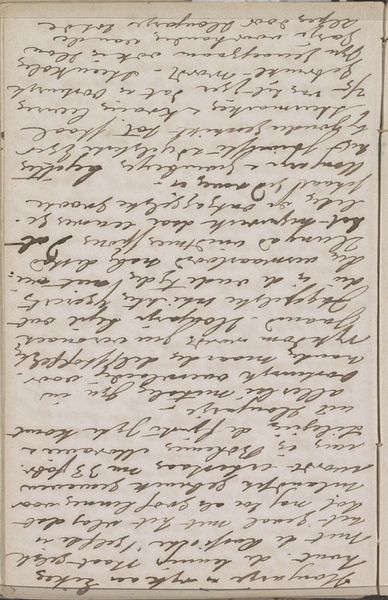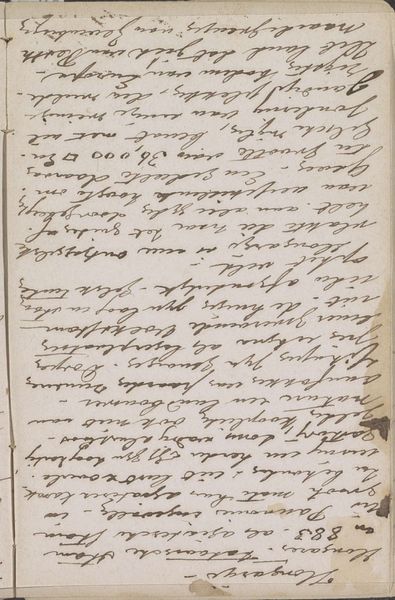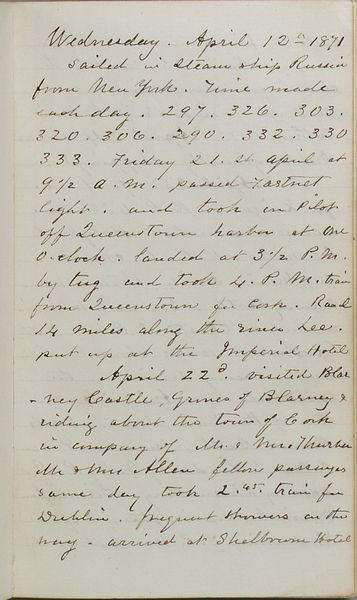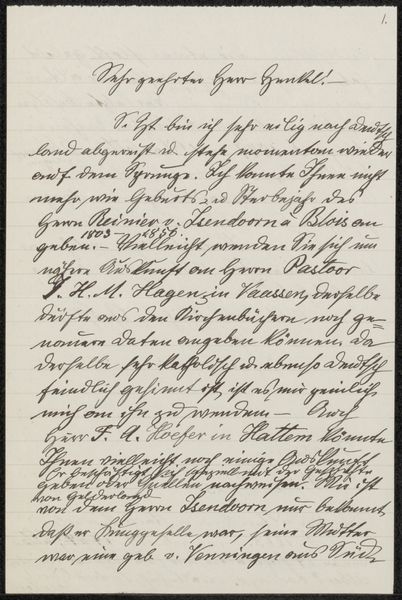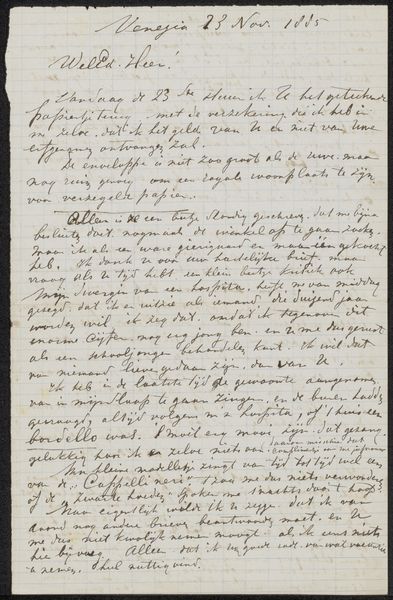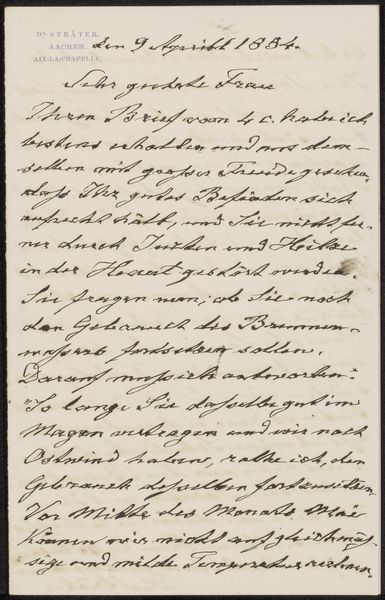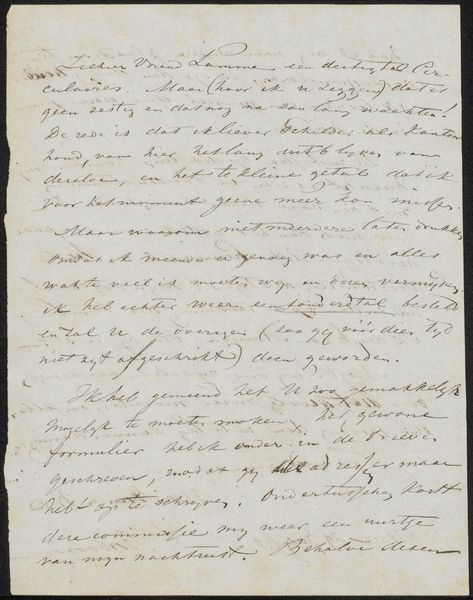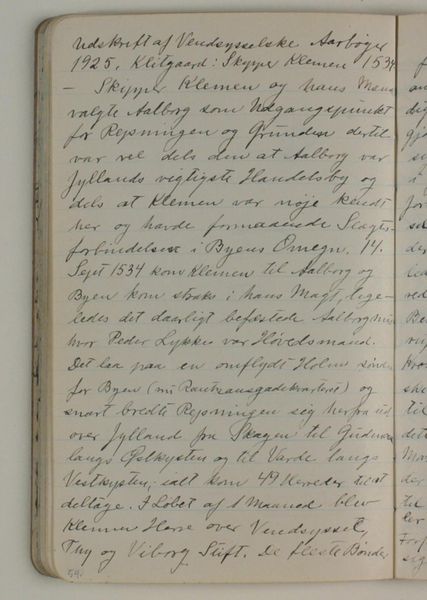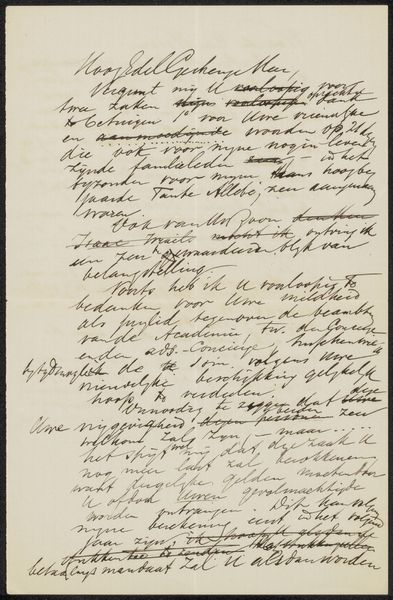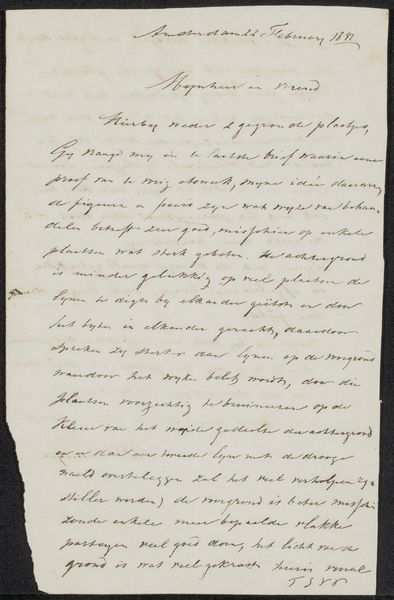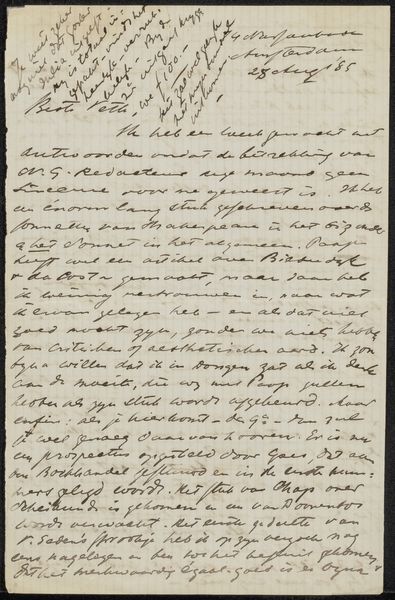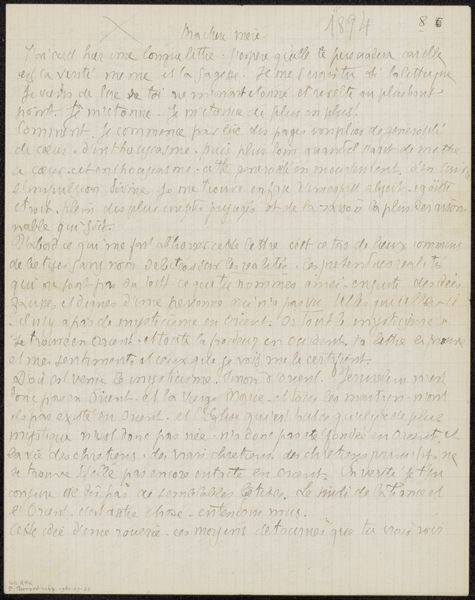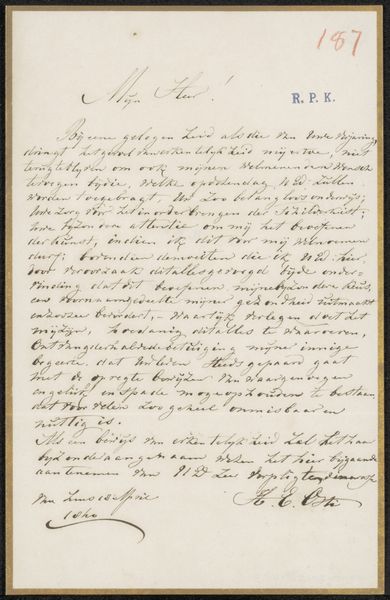
Deel van een artikel over Hongarije gekopieerd uit de 'Quarterly Review' 1862 - 1864
0:00
0:00
drawing, textile, paper, ink, pen
#
portrait
#
drawing
#
textile
#
paper
#
ink
#
pen work
#
pen
Copyright: Rijks Museum: Open Domain
Editor: This is "Deel van een artikel over Hongarije gekopieerd uit de 'Quarterly Review'" by Johannes Tavenraat, made between 1862 and 1864. It seems to be a handwritten page from a review, done in ink on paper, possibly laid over textile. It feels almost like I’m looking at a personal journal entry, yet it’s a copied article. What do you see in this piece? Curator: I see a complex interplay between the personal and the political, and between copying and authorship. Consider the socio-political context of mid-19th century Hungary – a nation grappling with identity, caught between empires, with revolutionary sentiments brewing. The act of copying an article, specifically about Hungary, suggests an active engagement with contemporary debates and potentially resistance to dominant narratives. Why this particular article, at this particular moment? Editor: That's interesting. I was just seeing it as transcription, but the choice of article makes it deliberate. So, you're saying this seemingly simple act is imbued with political significance? Curator: Exactly. The use of pen and ink, traditionally tools for official documentation, adds another layer. Is this a subversive act, to copy by hand something meant for wider circulation through print? Or is it a form of personal scholarship, internalizing information relevant to a specific political cause? Editor: So, instead of seeing it as just text, we have to think about who wrote it, why, and how it connects to the broader struggle for Hungarian identity and autonomy. Curator: Precisely. Even the textile possibly underneath might connect with questions about material conditions related to artistic production in this historical and geographic moment. What do you make of the relationship of line to legibility, the struggle in deciphering the word from the mark of the pen itself? Editor: It becomes much more than just a historical document. It shows how information, even copied, could be a form of quiet activism and a tool for shaping personal and perhaps even national identity. Curator: Absolutely. It challenges us to reconsider what constitutes art and activism and the various strategies people employ to assert their voices.
Comments
No comments
Be the first to comment and join the conversation on the ultimate creative platform.
